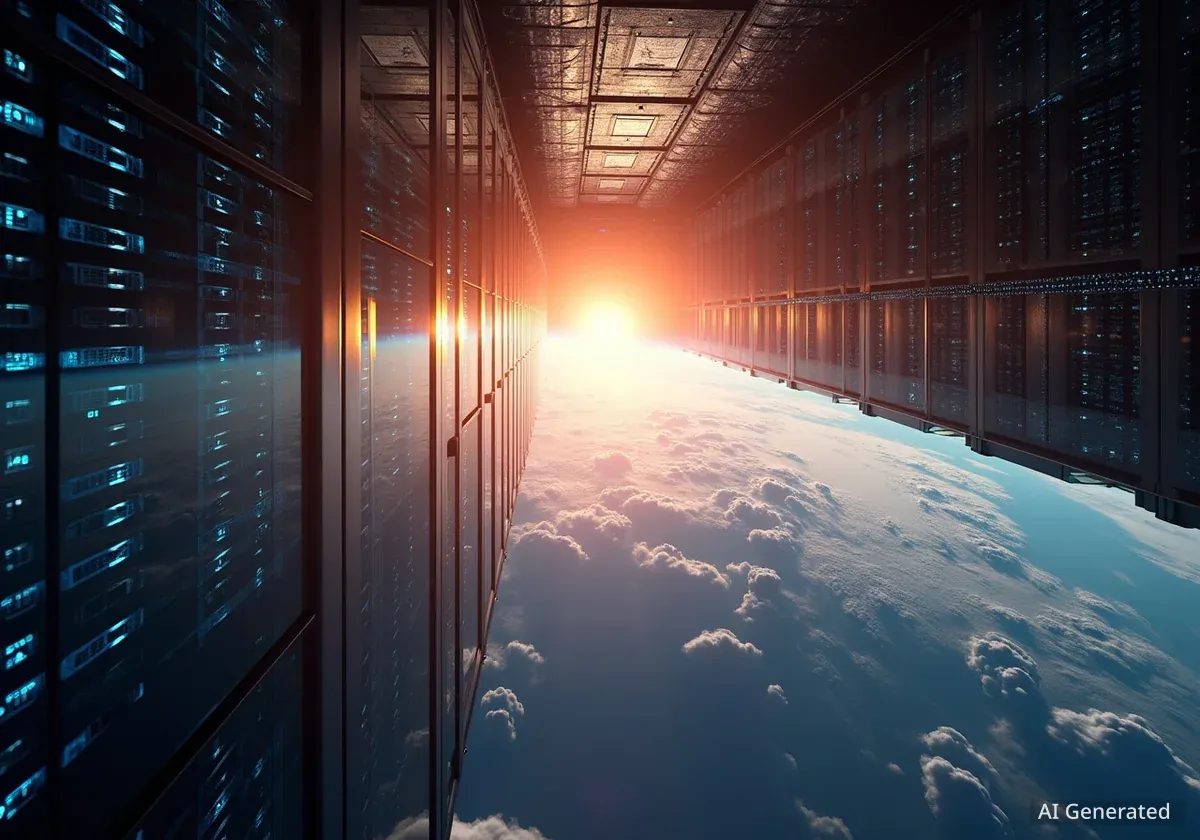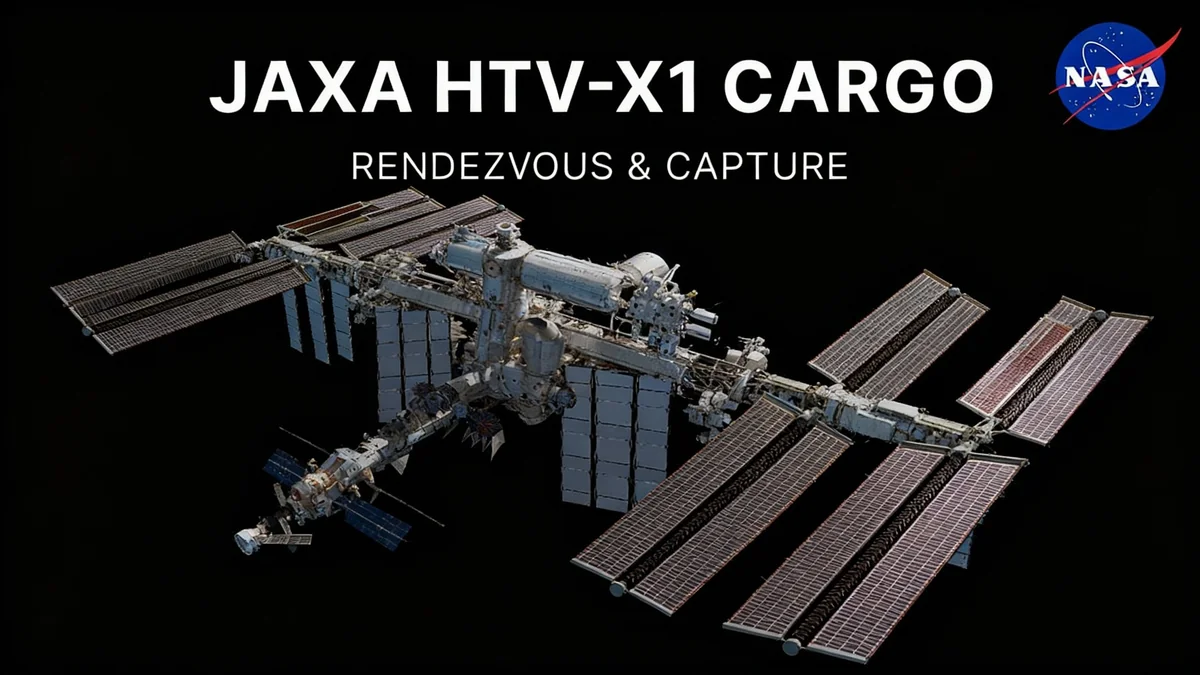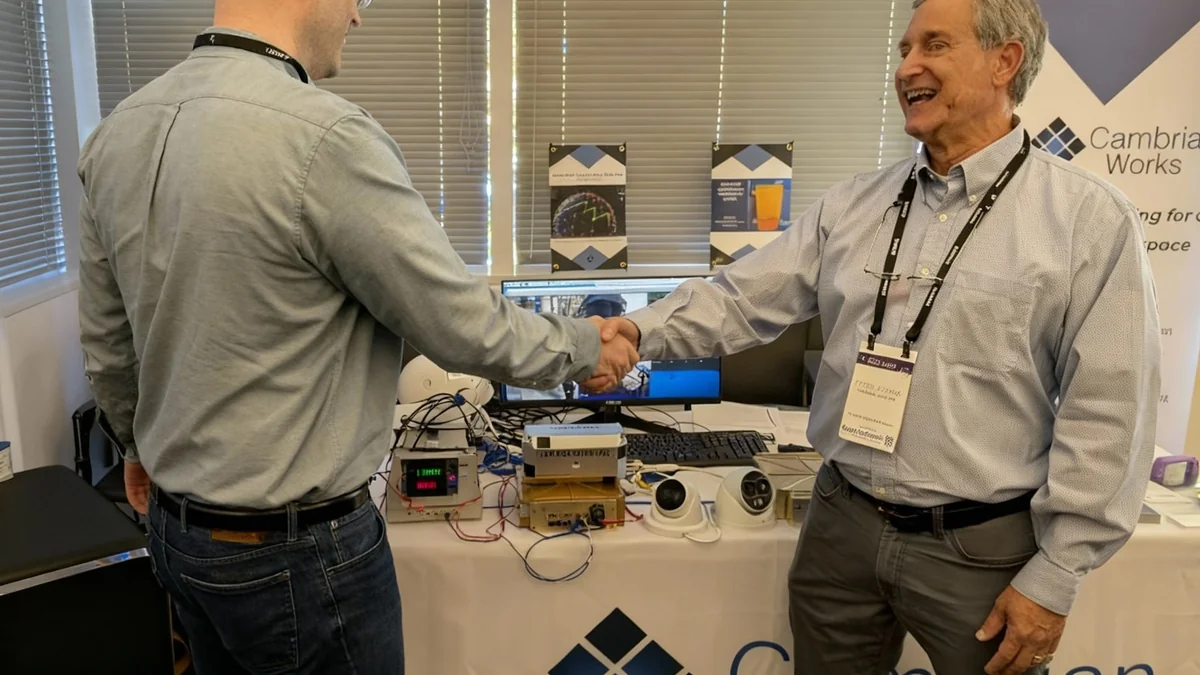Amazon founder Jeff Bezos stated that large-scale data centers will be built in space within the next two decades. Speaking at the Italian Tech Week in Turin, he argued that moving this infrastructure into orbit would leverage constant solar power and eventually become more cost-effective than Earth-based facilities.
Key Takeaways
- Jeff Bezos forecasts the development of gigawatt-scale data centers in space within 10 to 20 years.
- The primary driver for this move is access to uninterrupted 24/7 solar energy, which is unavailable on Earth.
- The increasing energy and water demands of terrestrial data centers, fueled by AI and cloud computing, make space an attractive alternative.
- Bezos believes space-based data centers will eventually outperform and be cheaper than their Earth-based counterparts.
- Significant obstacles remain, including high launch costs, complex maintenance, and the risk of mission failure.
Bezos Outlines Vision for Orbital Infrastructure
During a discussion with John Elkann, the chairman of Ferrari and Stellantis, at the Italian Tech Week event on October 3, 2025, Jeff Bezos shared his prediction for the future of digital infrastructure. He projected a clear timeline for moving major computing operations off-planet.
Bezos suggested that the first of these massive orbital facilities could be operational in the near future.
"One of the things that's going to happen in the next – it's hard to know exactly when, it's 10 plus years, and I bet it's not more than 20 years – we're going to start building these giant gigawatt data centres in space," Bezos said.
This forecast comes as technology companies grapple with the escalating resource requirements for data storage and processing on Earth. The rapid expansion of artificial intelligence and cloud services has created an unprecedented demand for power and cooling systems.
The Solar Power Advantage in Space
The core of Bezos's argument centers on energy efficiency. Data centers on Earth are among the most power-intensive facilities in the world, consuming vast amounts of electricity not only for computation but also for cooling the servers to prevent overheating.
In space, solar panels can generate electricity continuously without interruption from weather, clouds, or nighttime. This constant energy source presents a significant advantage over terrestrial power grids.
Growing Energy Consumption
According to the International Energy Agency, global data centers consumed an estimated 240-340 terawatt-hours (TWh) in 2022, accounting for approximately 1-1.3% of the world's total electricity demand. This figure is projected to grow substantially with the rise of AI.
Bezos emphasized that this access to constant power would make orbital facilities more efficient for large-scale computing tasks, particularly for training complex AI models.
"These giant training clusters, those will be better built in space, because we have solar power there, 24/7. There are no clouds and no rain, no weather," he explained.
He further predicted that this operational advantage would translate into a financial one. "We will be able to beat the cost of terrestrial data centres in space in the next couple of decades," Bezos stated, suggesting a long-term economic case for the orbital shift.
Part of a Larger Industrial Migration
Bezos framed the concept of space-based data centers as the next logical step in a broader trend of moving critical infrastructure off-world. He noted that humanity has already successfully relocated key services to orbit to improve life on Earth.
He pointed to existing satellite networks as a clear precedent for this type of migration.
Established Space Infrastructure
For decades, satellites have provided essential services from orbit. Weather satellites offer critical data for forecasting, while communication satellites form the backbone of global telecommunications, television broadcasting, and GPS navigation. This established history demonstrates the viability of operating complex technology in space.
"It already has happened with weather satellites. It has already happened with communication satellites," Bezos said. "The next step is going to be data centres and then other kinds of manufacturing."
This vision aligns with his long-stated goal for his space company, Blue Origin, which aims to enable a future where millions of people are living and working in space. Moving heavy industry and energy-intensive processes off-planet is a key component of that vision.
Significant Challenges Remain
Despite the potential benefits, relocating data centers to space presents a unique and difficult set of engineering and logistical challenges. The concept is still in its early stages, and numerous hurdles must be overcome before it can become a reality.
One of the most significant barriers is the cost and reliability of launching materials into orbit. While launch costs have decreased in recent years, they remain substantial, and the risk of a failed rocket launch could result in the catastrophic loss of expensive equipment.
Other major considerations include:
- Maintenance and Upgrades: Servicing hardware in orbit is far more complex and costly than on Earth. Repairing or upgrading components would likely require robotic missions or, in some cases, be entirely impractical.
- Data Transmission: While satellite internet is improving, latency—the delay in transmitting data between Earth and space—could be an issue for applications requiring real-time processing.
- The Space Environment: Equipment in orbit must be designed to withstand extreme temperature fluctuations, radiation, and the risk of impact from micrometeoroids and space debris.
As the demand for computing power continues to grow, technology leaders are increasingly exploring unconventional solutions. While the idea of orbital data centers faces major obstacles, Bezos's prediction highlights a potential long-term direction for the world's digital infrastructure.





